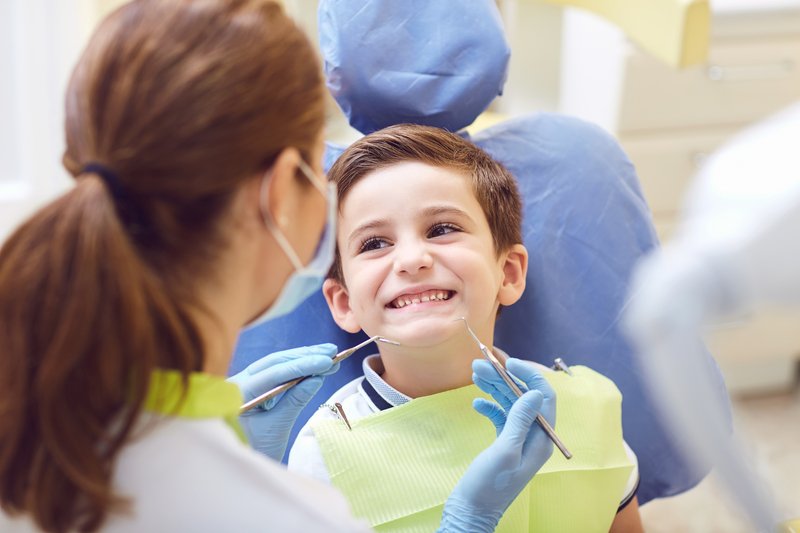
How Orthodontics Can Improve Speech and Boost Dental Health
Orthodontics is commonly associated with straightening teeth for a more aesthetically pleasing smile. However, its benefits extend far beyond cosmetics. Orthodontic treatments can have a profound impact on speech and overall dental health. While braces or Invisalign may initially require children to adjust to speaking with them, these appliances can also correct speech impediments that result from dental misalignments. This exploration into the relationship between orthodontics, speech, and dental health reveals not only the challenges patients may face but also the long-term benefits for their oral and verbal development.
Speech Adjustments with Orthodontic Appliances
Introducing any foreign object to the mouth can affect speech, and orthodontic appliances are no exception. Braces and Invisalign aligners can alter the way children pronounce certain sounds. This is because the placement and movement of the tongue are restricted, affecting sound formation, especially for those sounds that require tongue-to-tooth contact, like “s” and “z.”
Initially, children may experience a lisp or other minor speech impediments when they begin their orthodontic treatment. It is a temporary adjustment as they become accustomed to the new shape and space within their mouth. With time and practice, most children adapt to speaking with their orthodontic appliances and return to their normal speech patterns.
Overcoming the Challenges of Speaking with Orthodontics
There are effective strategies for children to overcome speech challenges that come with orthodontic treatment. Speech exercises and therapy can help in retraining the tongue and lips to properly form sounds. Reading aloud and engaging in conversation can accelerate the adjustment period as they provide frequent practice. Moreover, orthodontists often provide guidance on how to navigate these changes and can recommend speech therapists if necessary.
Children should be encouraged to speak slowly and deliberately during the initial adjustment period. This helps the muscles in the mouth to adapt to the appliances and learn to articulate sounds correctly. With patience and persistence, any speech alterations caused by orthodontics are generally temporary.
Orthodontics and Speech Impediment Improvement
While temporary speech challenges may occur with the introduction of braces or Invisalign, orthodontic treatment can also be a remedy for existing speech issues. Misaligned teeth or a malocclusion can contribute to speech impediments such as lisps, slurs, or the inability to pronounce certain sounds. By realigning the teeth and jaw, orthodontics can address the structural causes of these impediments.
Proper tooth alignment ensures that the tongue can move freely and contact the teeth as needed for correct speech articulation. An aligned bite can also prevent the tongue from protruding between the teeth, which is a common cause of lisping. In such ways, braces and other orthodontic devices can be instrumental in improving speech clarity and fluency.
The Role of Orthodontics in Dental Health
Orthodontic treatment’s impact extends to overall dental health. Aligned teeth are easier to clean, reducing the risk of cavities and gum disease. Proper bite alignment can prevent uneven wear on teeth, reduce jaw pain, and alleviate the symptoms of temporomandibular joint disorder (TMJ).
Orthodontic interventions can also prevent future dental problems. For example, correcting an overbite can minimize the risk of tooth damage from trauma, as protruding front teeth are more susceptible to injury. Therefore, the benefits of orthodontics for dental health are both immediate and preventive.
Choosing the Right Orthodontic Treatment
When considering orthodontic treatment for speech improvement or dental health, it is essential to choose the appropriate appliance. Braces, whether metal, ceramic, or lingual, offer a traditional solution for a wide range of issues. In contrast, Invisalign aligners provide a less visible option and can be removed for eating and cleaning, which some may find more convenient.
The specific needs of the child, including the severity of their dental misalignment and their lifestyle, will dictate the best course of treatment. A qualified orthodontist can assess the individual situation and recommend the most suitable option for achieving the desired outcomes.
Long-Term Benefits of Orthodontic Treatment
The effects of orthodontic treatment on speech and dental health can be transformative. Beyond the duration of wearing braces or Invisalign, children can enjoy a lifetime of benefits. Aligned teeth can facilitate clearer speech and contribute to higher self-esteem due to improved appearance and communication abilities.
The enhancements to dental health can lead to a reduced need for dental work in the future and contribute to overall health and well-being. The importance of oral health to systemic health is well documented, with numerous studies linking dental issues to conditions such as heart disease and diabetes. By addressing orthodontic issues early in life, the need for more invasive dental procedures later on may be diminished.
Orthodontic treatment offers a dual advantage: it can correct structural issues that affect speech and significantly improve dental health. While children may face a period of adjustment when first wearing braces or Invisalign, the long-term benefits are undeniable. Through proper guidance, practice, and care, orthodontics can provide a solid foundation for a healthy, expressive smile. The transformative power of these treatments supports not just a beautiful alignment of teeth but also the development of clear speech and the maintenance of overall dental health, positioning children for a healthier future.
Ready to embark on a transformative journey for your child’s smile and speech? We’re committed to providing top-notch orthodontic care that goes beyond aesthetics. Discover more about how our personalized orthodontic solutions can benefit your child. Contact us today and let’s create brighter smiles and clearer speech together!